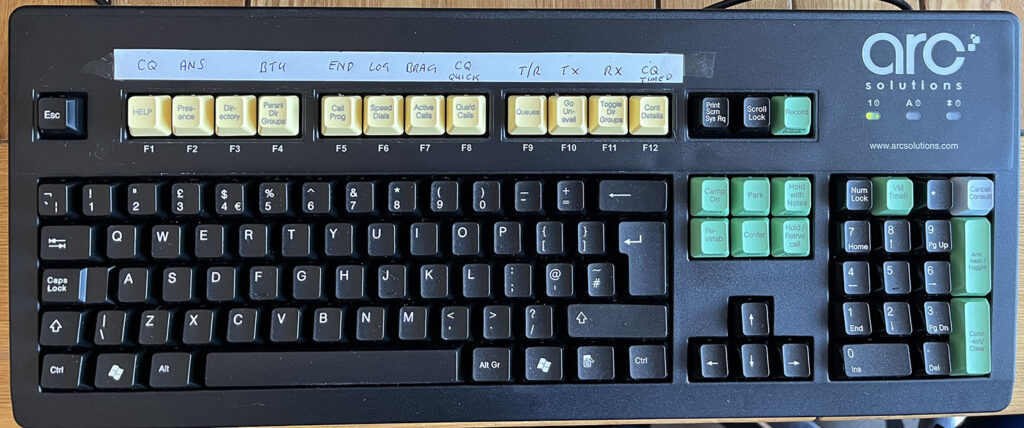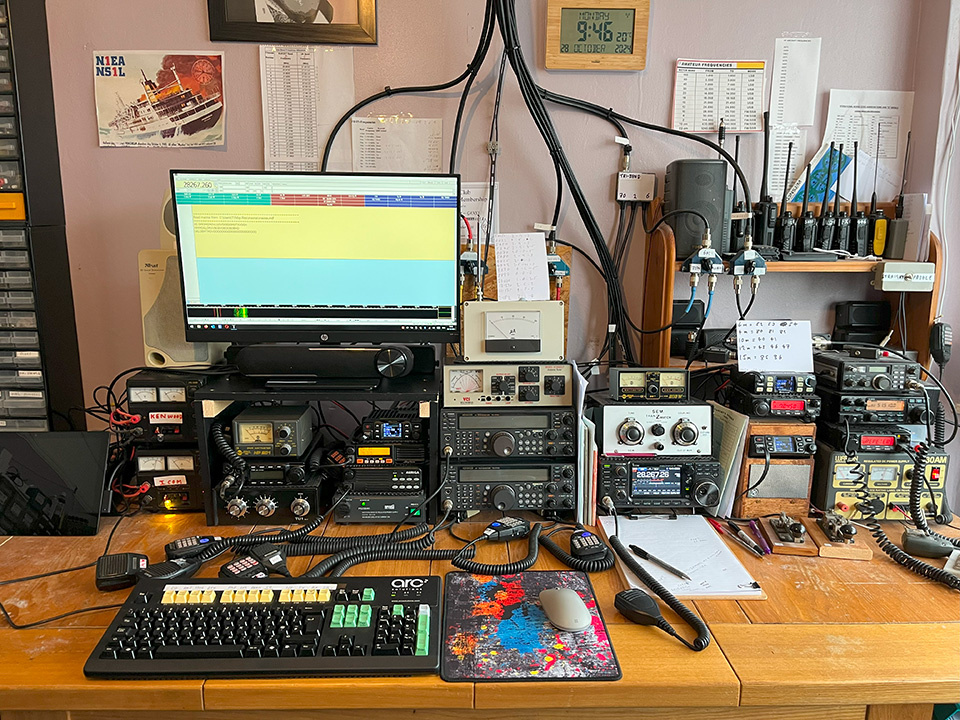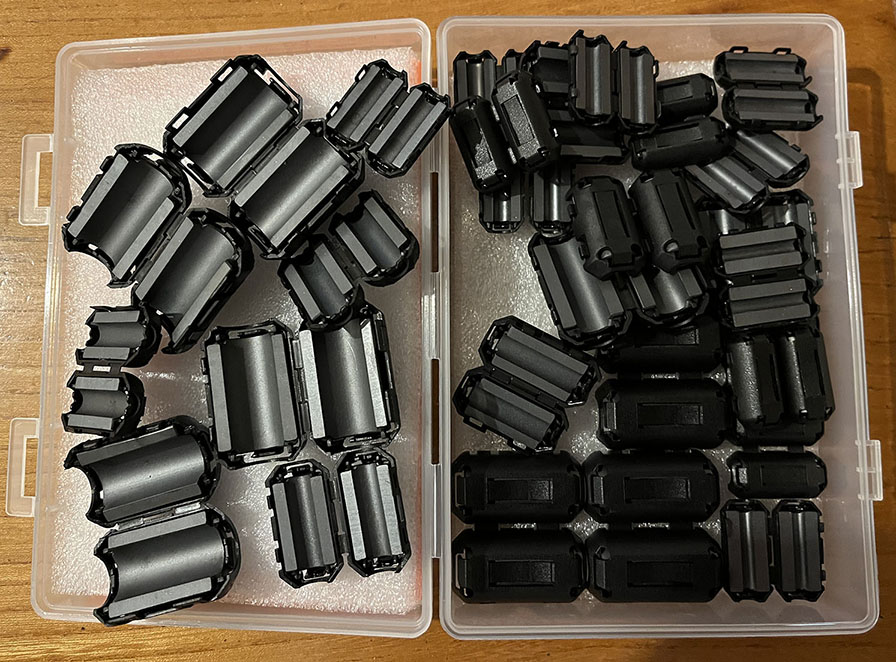Many years ago, I enjoyed using RTTY and PSK31. I then changed rigs and the interface didn’t work. Becoming increasingly busy with work, I never did get round to sorting it out. Now that I’m the proud owner of an Icom IC-7300, my interest in digital modes has been rekindled!
However, trying to get my computer to talk to my Icom IC-7300 was a nightmare. I downloaded the driver, played with settings in Fldigi and, after three days, it worked! But, there was a problem. The rig microphone was picking up data sounds from the computer speakers rather than direct. Finally, with the help of Nick, my good friend, I sorted it out. I’m now on the air with digital modes!
If you need help with the settings in Fldigi and your 7300, I’m afraid I can’t help. No, I’m not being mean. It’s just that I don’t know how I did it! I clicked this and that, adjusted various things in settings and, suddenly, it all worked.
Why go Digital?
I suffer from QRM at my QTH. Top band and 80 metres are virtually unusable. However, the digital modes cut through noise. It might be possible to have a PSK31 on 160 metres. That would make a pleasant change!
Computer Programs:
The program I’m running is Fldigi, which covers most modes. However, it doesn’t include FT8, which seems to be incredibly popular. I don’t know a great deal about FT8 but it seems that people don’t use it for QSOs. I might be wrong but I think it’s more for contests and exchanging reports. The program I’ve installed for FT8, should I decide to use it, is WSJTX.
Keyboards:
I think it’s worth mentioning keyboards. I had a cheap one with small soft keys. It was awful. Keys too close together, not positive when pressed… dreadful! It’s well worth spending a few quid on a so-called mechanical keyboard. The type pictured below, where the keys click positively when pressed. I’ve marked the F keys for various commands. After all, I’d never remember which keys do what!

All set for digi modes:
The monitor is rather high up but there’s nowhere else to put it.

Update 30/10/24:
I’ve just had my first contact using digital modes on 5MHz. My last contact was 15 years ago using PSK31. This time, I used Olivier 8/500 and then 16/500. It was real DX! From my QTH all the way to Brighton! That’s about 10 miles!
RF getting into the computer:
I’ve had trouble with RF getting into my Microsoft Surface Pro. I’ve used millions of ferrite rings and clip-on ferrite, see photo. I’ve also earthed everything and, although not perfect, I’ve cut the RF down considerably.

Digi Modes Bandwidth:
I hope to use digi modes on the 5MHz frequencies so bandwidth is important as I don’t want to transmit out of band or cause splatter. I ran a test on 5369KHz using PSK31 running 20 Watts and I was just over S9 on the Hack Green WebSDR. My antenna is a doublet about 30 metres long and 10 metres high fed with 300 Ohm ladder line. The Hack Green S meter reading was encouraging.
PSK31 occupies a bandwidth of around 31Hz. RTTY is around 170Hz. Olivia is variable between 125Hz to 2KHz. FT8, which I don’t use, is around 50Hz.
Olivia:
This is fast becoming my favourite mode. The number of tones that can be chosen with Olivia are 2, 4, 8, 16, 32, 64, 128, and 256. The higher tones giving more data redundancy but slower throughput. Lower numbers of tones giving faster throughput at the cost of less redundancy. Bandwidths for Olivia are 125 Hz, 256 Hz, 512 Hz, 500 Hz, 1000 Hz, and 2000 Hz. Wider bandwidths enable faster throughput, while narrower bandwidths result in slower throughput. The most commonly used combinations are 4/125, 8/250, 8/500, 16/500, 16/1000, and 32/1000.
Normally, stations make contact with the 8 tone, 250 Hz bandwidth and then switch to another sub-mode. I always use 8/250 when calling CQ
Apparently, Olivia was designed to overcome propagation-path phase issues and transpolar propagation problems. It is good for weak-signal decoding but, unlike WSPR, you will need to run the power necessary to make contacts. Although it can decode weak stations, it’s not an low power mode.
It’s a good idea to use the RSID (Reed Solomon Identification – RSID or TXID, RXID) option in your software. RSID transmits a short burst at the start of your transmission which identifies the mode you are using.
RTTY:
Many years ago, RTTY enjoyed immense popularity. In fact, dating back to the 1800s, it was the second form of digital communication, following only Morse code in its historical significance. Radio amateurs the world over used mechanical machinery with whirring motors and clicking relays to send and receive RTTY. These days, the mechanics have been replaced with electronics in the form of computers.
However, it seems to be a dying mode. PSK31 used to be hugely popular but, that also seems to be dying out. FT8 now rules the roost. Is it because people don’t want to have a chat to each other anymore? From what I understand, FT8 is for exchanging reports and DXing, not for chatting. If that’s what you want, FT8 is the way to go.
I like to have a chat, whether using phone, with a Morse key or via the keyboard. Having set up my Icom 7300 using FLdigi, I must admit that I’m rather disappointed to find that my two favourite modes, RTTY and PSK31, are rarely used these days. I have found some RTTY on 20 metres and 10 metres but nothing much elsewhere. I heard a couple of people complaining about RTTY causing QRM the other day. They were really anti RTTY. Is there something I’m missing here? If set up properly, does it cause QRM?
WSPR (whisper):
I’ve created a page dedicated to WSPR as there’s quite a lot to it.
FT8:
Just had my first contact on FT8. I prefer to have a chat on digital modes, albeit via a keyboard, but FT8 is interesting. For checking propagation, I use WSPR.
Digital on 5MHz:
From the RSGB: Frequencies between 5366.5kHz and 5371.5kHz are recommended for digital mode activity within the UK.
HF Digital frequencies:
Digital frequency list.
